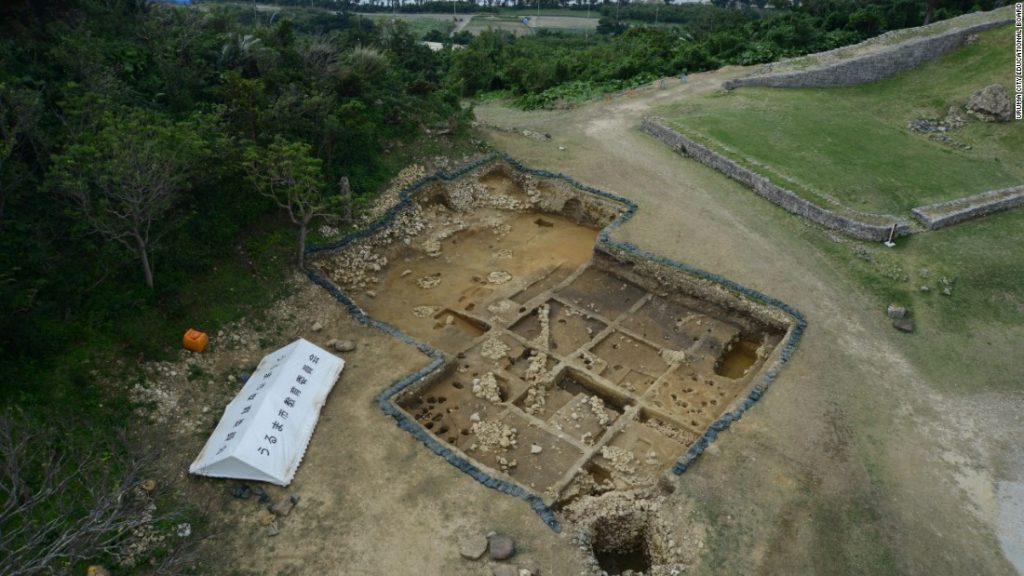“I couldn’t believe they’d found coins from the Roman empire in Kasturen castle. I thought that they were replicas that had been dropped there by tourists.” – Hiroyuki Miyagi, a researcher with Okinawa International University.

PHOTO: cnn.com

PHOTO: cnn.com
OKINAWA, JAPAN – Archaeologists have discovered a surprising, unheard-of find at an ancient Japanese castle: a small cache of Roman coins.
Work on Katsuren Castle, a UNESCO world heritage site in southern Okinawa, began in 2013. This year, Toshio Tsukamoto, a researcher working with the Gangoji temple cultural properties department, was called in to have a look at several artifacts that had been uncovered at the site, including a set of samurai armor.
To his surprise, he discovered a few unlikely treasures among the artifacts: 10 Roman coins and one Ottoman one.
“I’d been on excavation sites in Egypt and Italy,” Tsukamoto said, “[I] had seen a lot of Roman coins before, so I recognized them immediately.”
Just to be sure of the find, the archaeologists and researchers working at Katsuren Castle sent the eleven coins to Hiroyuki Miyagi at Okinawa International University. At first, he thought it was a complete hoax or a mistake, that the coins were merely replicas that had been left there by meddling tourists or pranksters.
However, when he examined them using X-Ray technology, he found that wasn’t the case. The coins were completely genuine.
“You can see the engravings on the coins clearer when you use X-rays,” Miyagi said.
According to his findings, the Roman coins date back to at least 300 to 400 AD, at a time when the Roman Empire was gripped in a civil war, and the Severan Dynasty was established. Rome was feeling the pressure from its powerful neighbor to the East: Persia. The Empire had to scramble to reform itself to cope with the treat. Under Diocletian, Rome was divided into a western half and an eastern half, with a different ruler to govern each.
The Ottoman coin dates much later, to the late 17th century. The Ottoman Empire was a serious problem for the rest of Europe. During the time when this coin was first minted, the Ottoman Empire clashed with Russia in the Russo-Turkish Wars. La Salle was claiming Louisiana for France, Isaac Newton published his Principia, and the Salem Witch Trials were being held in Massachusetts.
So, how did these coins – Roman coins dating back to the 3rd century, and a 17th century Ottoman coin – end up in a Japanese castle on Okinawa?
Well, that’s the question that the researchers are trying to figure out. Tracing the coins’ origins isn’t easy, according to Masaki Yokou, a spokesperson with Uruma city’s Board of Education. She believes it’s a “strange and interesting find”. It’s that, and more.
The castle has a history of trade with China and other neighboring Asian countries. Most of this trade was conducted during the 14th and 15th centuries AD. Yokou and Tsukamoto have theorized that the coins aren’t exactly a direct link to Rome or Turkey, but that they probably ended up in Okinawa after passing through several trade routes between Europe and Asia.
Archaeologists are hoping that other artifacts will help identify the trade route these coins traveled on. They’ve found Japanese ceramics as well as Chinese coins and ceramics. “The Chinese ceramics and coins that we found date back at least 600 to 700 years,” Miyagi said, “and we’d like to analyze those objects in tandem with these coins to work out how the coins may have ended up here.”
Recent finds all over the world have proved that the individual empires we read about in our textbooks at school were, and almost never have been independent from each other. The more we dig up around the world, the more we’re simply solidifying the fact that these empires and civilizations were inextricably intertwined through vast trade networks. They knew of each other. They communicated and traded items and cultures far more than we usually give them credit.
“We don’t think that there is a direct link between the Roman empire and Katsuren castle, but the discovery confirms how this region had trade relations with the rest of Asia.” – Masaki Yokou, spokesperson for Uruma city’s Board of Education.

